Reopen your Los Angeles medical office, post-Corona
Ready to reopen your surgery center in a post-Coronavirus work environment? Want to ensure that you aren’t forced to close your newly reopened clinic yet again? It’s proving difficult for hospitals to stay open in this new age of regulations and hyper sterilizations concerns. Companies are drowning or struggling to stay afloat, even medical and surgical services.Keep your employees and your patients safe.
Los Angeles officials have published a list of safety regulations that, if followed, could keep your clinics up and running. With health concerns high, you will have to take extra cautions into consideration in order to ensure your patients and employees’ safety. Just set these new rules in place and you’re back on track. By paying extra attention to sanitization and by practicing social distancing you can keep paying workers and helping patients.Follow CDC, OSHA guidelines
These guidelines are revised from the Interim CDC Guidance for Businesses and Employers to Plan and Respond to Coronavirus Disease 2019 (COVID-19), OSHA’s Guidance on Preparing Workplaces for COVID-19, and the Public Order Under City of Los Angeles Emergency Authority by Mayor Eric Garcetti. You can check LADBS.org for any updates. Also read: Designing your Medical Facility by FGI GuidelinesAmp up hygiene protocols for patient, nurse safety
To prevent health technicians and outpatients from contracting COVID-19 all ambulatory service employers must provide an exposure control plan that includes social distancing, maintaining hygiene, checking for symptoms, and decontamination. Any hospital or surgical clinic not complying with the guidelines as per the Safer at Home Order section 5(ix) may be ordered to shut down.As of the writing of this article, the following guidelines are expected for all medical clinics:
- Social distancing by maintaining a minimum six foot distance between workers.
- Preclude gathering in which a six foot distance cannot be ensured.
- All workers must wear a mask, scarf, or bandana that covers the mouth and nose. Reusable clothes or masks must be washed daily; disposable masks must be properly discarded.
- Provide personal protective equipment, appropriate for the activity being performed.
- A designated COVID-19 supervisor shall be present at all times of activity; a worker may be given this role.
- Identify ‘high risk’ areas such as hallways and elevators, where workers are forced to cluster, and ensure that social distancing is maintained.
- Minimize interactions when picking up or delivering equipment.
- Stagger the trade to reduce density and maintain social distancing.
- Discourage workers from using others’ tools and desktops. If necessary, disinfect items before and after use.
- Post in areas visible to workers the required hygienic practices: not touching the face with unwashed hands, washing hands with soap for 20 seconds, using hand sanitizer, disinfecting all frequently touched objects.
- Place washing stations or hand sanitizers in multiple locations.
- Require anyone sick to stay home.
- Have employees inform their supervisor if they have a family member at home with COVID-19.
- Maintain an attendance log of all workers and visitors.
- Workers must be permitted to wash hands at least every 30 minutes.
- Employees must have access to sanitary restrooms equipped with all necessary products like soap and sanitizer.
